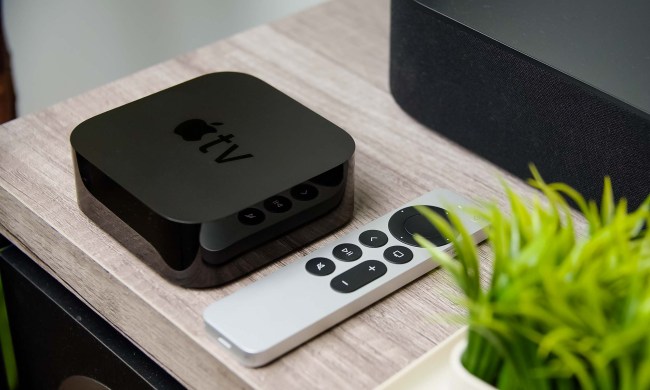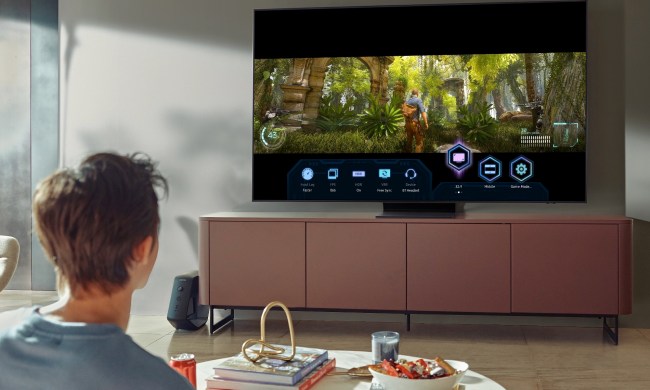If you’re looking for a new streaming device and are maybe a bit lost given all the choices out there, you’re not alone. Three of the biggest players in the space are Google, Roku, and Amazon, and that means a comparison between the Chromecast with Google TV 4K, Roku Streaming Stick 4K, and Amazon Fire TV Stick 4K is in order. So, which one comes out on top? All those devices hover at a $50 price point, so it can be confusing when comparing these streaming media devices. How do you decide which one is right for you?
Truth be told, it’s difficult. These streaming devices have far more similarities than differences. And since you can’t easily pick one by price, the answer will be in the details. So, let’s take a deep dive and see where each device’s strengths and weaknesses are to help you find the best solution for you.
Design
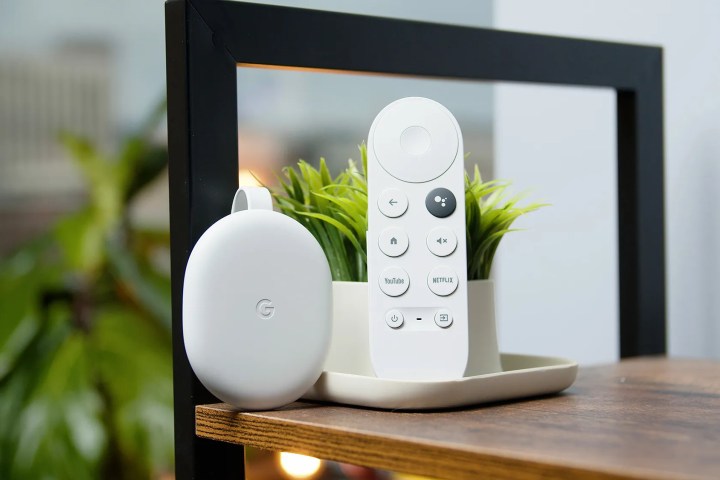
All three devices include roughly the same items in the package: a streamer device that plugs into an available HDMI port on your TV, a Micro USB cable for power (which, in the Roku’s case, also doubles as its wireless transmitter module), a power adapter, and a voice-enabled remote control.
Roku and Amazon use nearly identical black HDMI stick designs for their streamers. Amazon’s Fire TV Stick 4K comes with an HDMI extender cable in case the stick doesn’t fit in your TV. The Roku Streaming Stick 4K does not. Amazon also has a Fire TV Stick 4K Max that is only $10 dollars more and comes with additional storage and a better remote (you should probably just buy that one), but we will focus on the Amazon Fire TV Stick 4K for this piece.
Google’s Chromecast with Google TV follows a slightly different approach that puts the device at the end of a flexible HDMI cable. It’s a tad bulkier than the stick style, but it has its benefits: It’s easier to plug into a TV’s HDMI port in situations where you already have other cables plugged into the other ports (or where a TV is designed such that there’s no physical room to have a stick poking straight out of a port). Because the Chromecast sits farther away from the TV chassis, which can cause Wi-Fi interference, it might enjoy a stronger wireless connection than some of the other options in this roundup. But keep in mind that since the Amazon Fire TV Stick 4K works with Wi-Fi 6, it may not be tops in every case. Chromecast with Google TV also comes in three different colors: Sky, Sunrise, and Snow.
If you plan on using 4K features, you want to use the included power adapter even if your TV’s USB can power the streamer. These devices can get power-hungry. Chromecast with Google TV specifically requires you to use the included USB-C adapter, but technically, the Amazon Fire TV Stick 4K and Roku Streaming Stick 4K can be plugged into the USB on your TV. Roku has a long USB power cable with a long-range Wi-Fi receiver that helps with the power issue, but without an HDMI extender, you may still have issues getting it installed into your TV.
Unless the Chromecast’s power adapter requirement is a non-starter for you, then the included HDMI Extender built into the Chromecast, as well as some choice of colors, gives it a slight advantage in the design category.
Winner: Chromecast with Google TV
Remote controls

Once again, the similarities between these devices are plenty. They’re all about the same size and weight, all powered by non-rechargeable batteries, and all possess the following buttons:
- Power (for the streamer and your TV)
- Volume up/down/mute (for your TV, soundbar, or AV receiver)
- Navigation buttons (D-pad) with central OK button
- Home
- Back
- Voice control via the microphone
But when you look closely, Google appears to have taken a simplified approach to the Chromecast with Google TV’s remote, which doesn’t possess dedicated buttons for:
- Play/pause
- Fast-forward/rewind
Both the Roku and Amazon remotes have these buttons, and Roku, which has the most buttons of all three remotes, also throws in four shortcut buttons for specific apps like Netflix and Apple TV+, plus an instant-replay button that zaps you back 20 seconds while watching any video.
Google’s remote can still accomplish the same number of functions (except instant replay) by giving some buttons more than one function. For instance, the central OK button inside the D-pad becomes the play/pause button while watching a video. Likewise, the left and right D-pad buttons provide fast-forward/rewind.
There’s no question that Google’s approach yields a smaller, simpler remote, but we’re still very partial to Roku’s single-purpose buttons, which make operating the Roku Streaming Stick 4K a real no-brainer for most folks.
Winner: Roku Streaming Stick 4K
Access to content
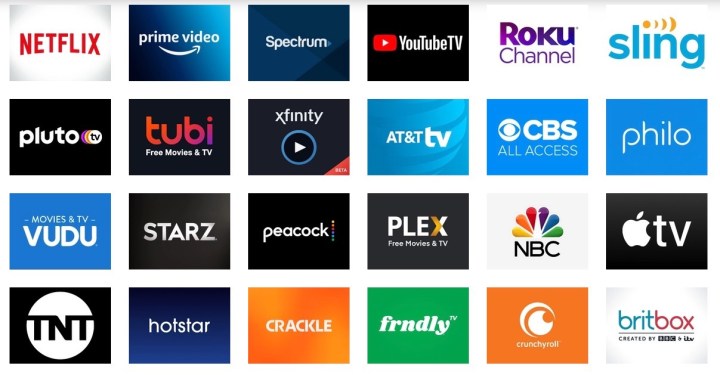
All three devices include apps or channels that allow you to watch the major streaming services (if you have a paid subscription to them), including:
- Netflix
- Prime Video
- Apple TV+
- Disney+
- Max
- YouTube TV
- Paramount+
- Funimation
- Hulu with Live TV
- Peacock
- Crunchyroll
On the surface, this category should belong to Roku. As the oldest streaming platform, the company has amassed an incredible array of streaming services (which are added to the device as downloadable “channels”), and its channel store contains everything from the biggest names like Netflix and Disney+ to the smallest, micro-targeted offerings from spiritual groups and hobbyists.
It’s also home to the Roku Channel, an excellent resource for free, ad-supported content. It also boasts an easy way to bring your subscription services into a single interface. Roku’s recent addition of more than 300-plus free live TV streaming channels makes this even more compelling.
Google Chromecast with Google TV comes with more than 10,000 apps to download. If you want to watch live TV on Chromecast, you can download Pluto TV, YouTube TV, Sling TV, Philo, or a different local app if available. You can also opt for Google TV, which has more than 800 live TV channels, including some that are exclusive to Google. Although many of those channels aren’t very well-known, you will find your standard networks you’d expect to see on a live-TV service. Plus, you can buy or rent movies that will be added to your Google library.
Amazon Fire TV Stick also has access to a seemingly endless supply of channels. And it comes with access to Prime Video, which is home to many exclusive movies and TV shows, but all the devices include the ability to watch it via an app if you have the subscription. You also get the ability to buy or rent films from Amazon.
We’re awarding this one to Roku on the strengths of the size of its channel catalog and its superb Roku Channel.
Winner: Roku Streaming Stick 4K
Support for audio and video formats

All three streaming devices will support 4K resolution at up to 60 frames per second (fps). They also support all the major video formats, including HDR, HDR10, HDR10+, HLG, and Dolby Vision. They are all equal. The audio is a slight difference here.
Chromecast with Google TV offers Dolby Digital, Dolby Digital Plus, and Dolby Atmos via HDMI passthrough. Amazon offers Dolby Atmos, 7.1 surround sound, two-channel stereo, and HDMI audio passthrough up to 5.1. Roku offers Digital Stereo, DTS Digital Surround, and Dolby-encoded audio passthrough over HDMI.
Passthrough support for Atmos is good in that if you have an Atmos-capable TV, soundbar, or AV receiver, apps can send an audio bitstream to these devices, which will then use that to let you hear Dolby Atmos sound. The problem is that some apps, most notably Netflix, won’t allow Atmos passthrough.
The Fire TV Stick 4K appears to be the winner with the ability to fully decode Dolby Atmos. But, for reasons we have yet to discover, Netflix also denies the Fire TV Stick 4K access to Dolby Atmos soundtracks, forcing it to use Dolby 5.1.
It’s a similar story for Google’s Chromecast with Google TV, however, in this case, Dolby Atmos is passthrough-only, just like the Roku. And yet, in a move that seems to defy all logic and consistency, Netflix will let Chromecast with Google TV access Dolby Atmos soundtracks.
Overall, Dolby Atmos support is similar, and there are the same video formats on all three devices.
Winner: Draw
Content discovery and ease of use
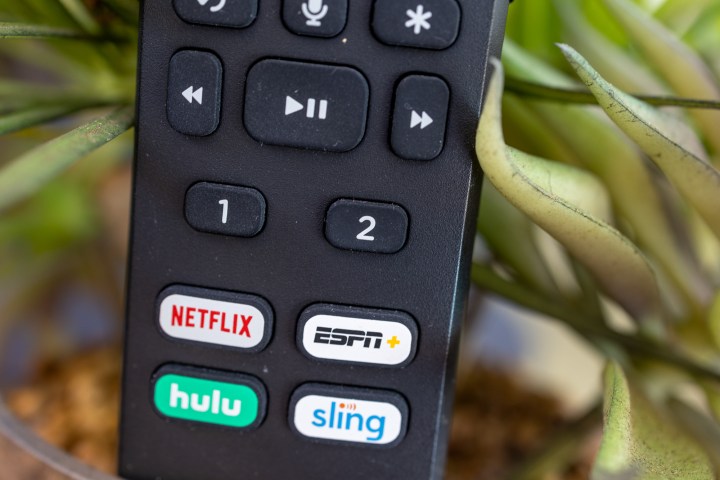
Roku’s search has always been top-notch, and we have no doubt that will continue to be the case. But these days, with thousands of movies and shows at our fingertips, searching isn’t necessarily the best way to find something to watch.
That’s why both Google TV and Amazon’s Fire TV interface are solid improvements for our ability to discover new content. Both offer a curated view of all of your apps, channels, and subscriptions based on your habits and what you watch, and Google TV has even integrated YouTube TV (for those who subscribe to that service) to blur the lines between what’s on-demand and what’s live even further.
For that intuitive discovery alone, it looks like it’s a tie between Google and Amazon.
Winner: Tie between Amazon Fire TV Stick 4K and Google Chromecast with Google TV
Content casting, games, and extra features
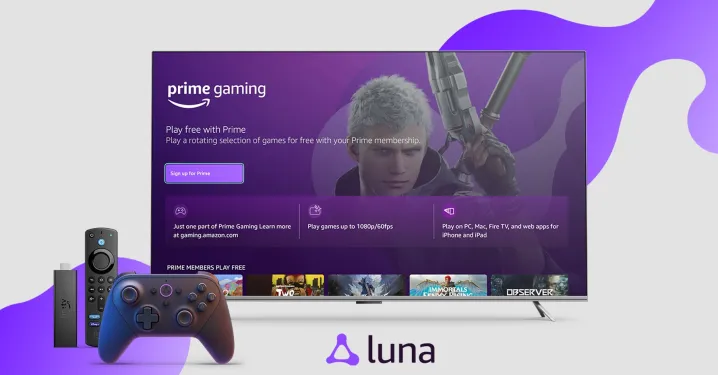
There’s a lot going on here, so let’s break it down:
Roku Streaming Stick 4K
- Private listening mode and screen mirroring via the Roku app
- Share videos, photos, and music from your Apple device using AirPlay
- Hotel and dorm room connect for easy use while traveling
- Compatible with both Google Assistant and Amazon Alexa voice assistants to launch channels and search for entertainment
Amazon Fire TV Stick 4K
- Compatible with Amazon’s Luna subscription gaming service
- Alexa is built-in for control of smart home devices
- Connect to headphones or game controllers via Bluetooth
- Optional Ethernet adapter
Google Chromecast with Google TV
- Casting of content from Android or iOS devices
- Connect to accessories via Bluetooth
- Google Assistant built-in for control of smart home devices
- Optional Ethernet adapter
We suspect that as long as you’re not a gamer, Roku’s collection of thoughtful extras makes it the winner. And on the gaming front, Amazon is arguably leaning into it the most with its Luna subscription gaming service the lone option among the three devices. So if that’s a big draw for you, there’s your answer.
Both the Amazon and Google devices offer a sold-separately Ethernet adapter if you need a hardwired connection in your house, but the majority of users will not need this and can connect via Wi-Fi.
Yeah, this one’s going to be decided by you, not us.
Winner: Draw
Conclusion
Were you hoping for an easy decision here? Perhaps some fatal flaw that would take at least one of these streaming gadgets off the table?
Unfortunately, that’s not the case this time around, but it’s for the best possible reason: Roku, Amazon, and Google have all created great 4K streaming media devices at prices that most will find very affordable.
But we’re not going to leave you stuck with your streaming device decision without a little advice. Roku offers the most content choices, a neat remote, and some unique custom features like private listening mode. Google offers a uniquely designed device that may make it easier to use on your TV and with Google Assistant, and it holds up in all the other categories as well. Amazon’s device offers an HDMI extender and Alexa built-in and is equally strong in all the other categories.
Overall, which device you choose will mostly depend on the services you have in your home already, as they are pretty similar devices at this point, and you can’t go wrong with any one of them.



